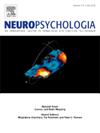通过在快速眼动睡眠期间策略性地呈现声音来重新激活清醒的体验来研究梦境。
IF 2
3区 心理学
Q3 BEHAVIORAL SCIENCES
引用次数: 0
摘要
梦可能在一定程度上反映了夜间发生的记忆重组,从而提高了我们每天所学知识的实用性。然而,还没有确凿的证据将做梦与适应性的夜间记忆重组联系起来。建立这种联系面临着几个挑战,包括实验控制梦的内容的困难,以及梦报告在醒来时对扭曲和遗忘的敏感性。幸运的是,记忆巩固可以通过目标记忆再激活(TMR)系统地操纵,即睡眠期间的感觉刺激可以影响先前获得的记忆,通常可以减少遗忘。睡眠中出现的刺激也可以被纳入梦境,但是用TMR重新激活记忆对梦境内容的影响程度尚不清楚。在本研究中,我们利用TMR来策略性地影响梦。晚上,参与者完成了两项截然不同的任务,每项任务都与一种独特的声音有关。两项任务和两种(平衡的)声音之间的联系在睡觉前的条件反射阶段进一步加强。然后,当参与者处于快速眼动睡眠状态时,实验者向他们播放两种声音中的一种。梦报告显示,与未提示任务相比,提示任务中包含的任务元素更多,尽管这两个任务的结合程度都很高。此外,梦到一项任务与消极效价下降和创造力增加有关。我们的结论是,这种梦境管理的方法为研究做梦对记忆储存和其他认知功能的影响提供了一种有希望的方法。本文章由计算机程序翻译,如有差异,请以英文原文为准。

Investigating dreams by strategically presenting sounds during REM sleep to reactivate waking experiences
Dreams may partially reflect the memory reorganizing that occurs nightly, improving the usefulness of what we learn each day. However, solid evidence has yet to link dreaming with adaptive overnight memory reorganization. Establishing this link faces several challenges, including the difficulty of experimentally controlling dream content and the susceptibility of dream reports to distortion and forgetting upon awakening. Fortunately, memory consolidation can be systematically manipulated using Targeted Memory Reactivation (TMR), whereby sensory stimulation during sleep can influence previously acquired memories, often reducing forgetting. Stimuli presented during sleep can also be incorporated into dreams, but the extent to which reactivating memories with TMR can influence dream content is still unclear. In the present study, we enlisted TMR to strategically influence dreams. In the evening, participants performed two distinct tasks designed to be readily incorporated into dreams, each associated with a unique sound. The associations between the two tasks and the two (counterbalanced) sounds were further reinforced in a conditioning phase just prior to sleep. The experimenter then presented one of the two sounds when participants were in REM sleep. Dream reports revealed more incorporation of task elements from the cued task than from the uncued task, though incorporation was high for both tasks. Furthermore, dreaming of a task was linked with decreased negative valence and increased creativity. We conclude that this approach to dream curation provides a promising way to investigate the influence of dreaming on memory storage and other cognitive functions.
求助全文
通过发布文献求助,成功后即可免费获取论文全文。
去求助
来源期刊

Neuropsychologia
医学-行为科学
CiteScore
5.10
自引率
3.80%
发文量
228
审稿时长
4 months
期刊介绍:
Neuropsychologia is an international interdisciplinary journal devoted to experimental and theoretical contributions that advance understanding of human cognition and behavior from a neuroscience perspective. The journal will consider for publication studies that link brain function with cognitive processes, including attention and awareness, action and motor control, executive functions and cognitive control, memory, language, and emotion and social cognition.
 求助内容:
求助内容: 应助结果提醒方式:
应助结果提醒方式:


